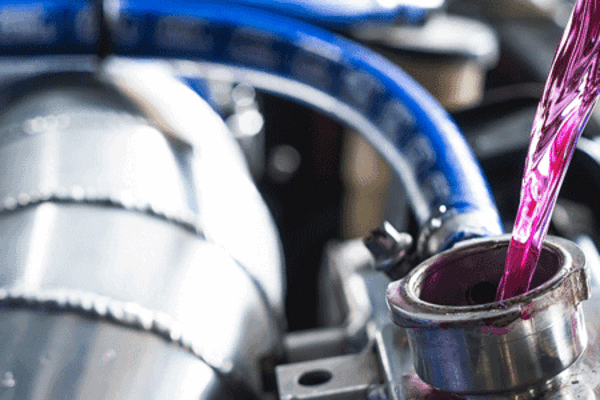Ultra all-inclusive analysis kit for faults in the cooling system
Year of publication: 2023
Aqueous coolants are extremely important in ensuring the safe operation of engines and many other systems. They are monitored with OELCHECK’s unique, trusted all-inclusive analysis kits. When researching in the laboratory, the focus lies on the remaining performance potential of the respective coolant and whether any indications of damage to the cooling system are visible.
With the new Ultra all-inclusive analysis kit, we now have an investigation package available for even the most peculiar of issues. It offers highly detailed information about the state of a coolant and the cooling system – and is a particularly valuable tool in searching for the root cause when faults or damage have occurred. OELCHECK also recommends the new Ultra all-inclusive analysis kit when developing cooling systems, for test benches and when accepting or handing over devices.

Table of contents
Microscopic particle counting
The number of insoluble particles offers an indicator of the level of contamination in a system from the outside, but also sheds light on erosion or cavitation from the inside. Photographs of the particles allow possible causes to be identified more easily. The additional information on particle size provides valuable data when optimising filtration.
Filtered element analysis
In the case of heavily contaminated coolant samples, OELCHECK measures the elements using filtration at 0.45 μm. This not only allows you to protect your test devices, but is also a handy additional test for unfiltered measurements of smaller impurities and, in particular, turbid coolants. While the unfiltered measurement detects undissolved, but suspended tiny particles (i.e. < 5 μm), the filtered measurement (0.45 μm) establishes only the components dissolved in the coolant. The results can provide additional insight into the additives used, the type of chemical bonds or the origin of the elements.
Reserve alkalinity
The pH value and reserve alkalinity take a coolant’s acid-base balance into account. The pH value describes the current state, while reserve alkalinity allows us a glimpse into the future, providing information about the quantity of acid that the additive system can still neutralise. However, the assessment of reserve alkalinity depends heavily on the additive technology and the materials used.
Water content according to Karl Fischer
As a rule of thumb, a coolant’s glycol content is calculated using the refractive index. It is assumed that the remaining part is water. However, this does not apply if a coolant contains very large quantities of additives or additives of glycerin, or if it is a mixture of different types of glycol or mixed with other aqueous fluids (such as AdBlue or alcohol derivatives). In that case, it is best to establish the water value using the Karl Fischer method to take an unknown factor out of play.
Contamination
Although contamination in coolants is relatively rare, it does occur every so often. The conditions for growth are often ideal – low-temperature circuits are rarely hot enough to boil everything in sight, but are warm enough to generate growth. This results in the formation of a biofilm on surfaces in circulation, which can dissolve and lead to turbidity of the fluid. In the worst case, deposits form in the filters or on heat-transfer surfaces, and the formation of acid and subsequent corrosion may also occur. This could then lead to a system failure.
PQ index
The Particle Quantifier index provides information about magnetisable iron wear particles in the entire sample. These originate, for example, from production residues, damage to moving parts (such as the coolant pump), and from external contamination or wear due to cavitation.
Top tip: Premium coolant analysis kit for e-mobility
Electric cars need coolants, too. They are crucial in fast-charging vehicles, in particular. Based on a mixture of glycol and water, these coolants are somewhat similar to the conventional coolants used in cars with internal combustion engines.
Coolants with little or no conductivity are often used, and they are usually based on organic additives. These organic acid technology (OAT) coolants contain corrosion inhibitors based on organic acids.
Any changes in these organic additives should be controlled. As a result, OELCHECK recommends the Premium all-inclusive analysis kit for analysing coolants from electric vehicles and monitoring the performance of the key coolant operating fluid.

OELCHECKER Winter 2022, page 11



